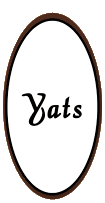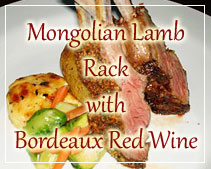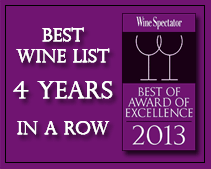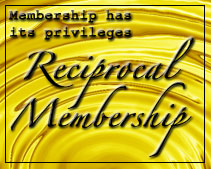French Food Culture
april 21,2011
Culture of French Food
French cuisine is extremely diverse, with only the Chinese having similar variety in their food. This variety is supported by the French passion for good food in all its forms, France’s extraordinary range of different geographies and climates which support the local production of all types of ingredients, and France’s long and varied history. In many ways, an understanding of the culture of French food and recipes is an understanding of France itself.
Meals range from the very basic, such as the traditional baguette plus cheese plus inexpensive wine, to very elaborate affairs than can involve a dozen courses and different wines consumed over several hours. Obviously, the latter type of dining is exceptional for most people. However, it is this more sophisticated dining which is typically found in “French restaurants” outside France, giving many foreigners the mistaken impression that French food is heavy and complicated. In fact, much of the French cuisine is fairly simple, relying on high quality fresh ingredients and loving preparation rather than complex recipes.
It is common in much of France to take a two hour break for lunch, with many working parents (particularly in villages and smaller towns) returning home for lunch. In some areas, mainly in the south of France, even longer lunch breaks are taken. Due to the long lunch break, businesses which close for this period typically reopen around 2PM or so and then stay open until about 7PM.
Regional influences on French food
Almost all the famous French dishes are regional specialities, some of which have become popular throughout France (such as Coq au Vin and Foie Gras) while others are mainly enjoyed in the regions in which they originate. Although regional specialities are often offered throughout France, the quality of ingredients and preparation is often superior in their region of origin.
Each region, in addition to boasting local specialities, also has a general style of cooking and choice of ingredients. For example, in Provence the food typically features olive oil, herbs and tomatoes. The evolution of regional cooking styles has been influenced by:
• Local availability. The French, a nation of gourmets, know that the best food is made from local ingredients, which are fresher and of better quality than items which have been transported long distances. Consequently, coastal regions (such as Brittany and Normandy, on the northwest coast of France) will favour sea fish and will use it more often and in more varied ways than inland areas. Likewise, areas where fruit or herbs grow easily, will incorporate these into their local cuisine.
• Neighbouring countries and immigration. Areas of France which border on other countries have incorporated some of the cuisine of their neighbours. It is not surprising to find Italian dishes near the Italian border. More notably, the French region of Alsace is similar to Germany in its food (sauerkraut is popular) and wine, partly due to it currently bordering on Germany and partly due to it having been part of Germany at various points in its history (the border has moved back and forth with various wars). In parts of the south which have a large North African immigrant population one can enjoy the cuisine which they have imported from their original countries.
• History and economic conditions. The culture, lifestyle and economic conditions over a long period of time have formed the development of local food traditions. The rich meat dishes and cream sauces of Burgundy are not only due to Burgundian excellence in raising cattle, but in large part to the economic prosperity of this region over several centuries. On the other hand, mountain regions excel in firm cheeses, which allow food to be preserved over the long and difficult winters, and can be produced from mountain livestock which historically were the main means of support for many families in economically limited areas.
In all parts of France one will find a range of dishes, both in restaurants and in homes, which extends far beyond the regional specialities. However, in much of France the regional influences in terms of ingredients and cooking are marked. The most available food and the best cooking tend to be those produced from local ingredients and using local recipes. Therefore, the decision of where to visit or live in France tends to influence which types of food one will enjoy.
The French Mediterranean uses olive oil, herbs and tomatoes in many of its dishes. The cuisine of northwest France uses butter, soured cream (crème fraiche) and apples. The cuisine of northeast France (Alsace, and to a lesser extent Lorraine) has a strong German influence which includes beer and sauerkraut. Throughout the south in general there tends to be more use of vegetables and fruit (in part due to the favourable climate). Near the Atlantic coast and the Mediterranean there is a greater consumption of sea food, while inland areas favoured by rivers (e.g. the Loire valley) use more fresh water fish.
The Italian connection
Any discussion of the influences on French cuisine would be incomplete with recognising the historical contribution of Italy to the development of French cooking. In 1533, Catherine De Medicis (a Florentine princess) married Henry duc d’Orleans (who became King Henry II or France). At this point, France was not know for its food or food culture. Catherine brought an entourage of Italian chefs with her to France, who introduced to France a variety of dishes, food preparation and dining practices. Although France and Italy obviously have evolved very different food cultures, both before and since this contribution, much of France’s current food culture can be traced back to this time.
Cooking styles
Every region of France has its own distinctive traditions in terms of ingredients and preparation (see France Regions for further information). On top of this, there are three general approaches which compete with each other:
• Classical French cuisine (also known in France as cuisine bourgeoise). This includes all the classical French dishes which were at one time regional, but are no longer specifically regional. Food is rich and filling, with many dishes using cream-based sauces.
Haute cuisine is classical French cuisine taken to its most sophisticated and extreme. Food is elegant, elaborate and generally rich. Meals tend to be heavy, especially due to the use of cream and either large portions or many smaller portions. There is a strong emphasis on presentation (in particular, vegetables tend to be cut with compulsive precision and uniformity). The finest ingredients are used, and the meal is correspondingly expensive.
• Cuisine Nouvelle. This style developed in the 1970s, as a reaction against the classical school of cooking. The food is simpler and lighter. Portions are smaller and less rich; the heavy cream sauces of the classical approach are particularly avoided. Cooking is less elaborate and quicker, with more emphasis on local and seasonal ingredients.
• Cuisine du terroir. This focuses on regional specialities and is somewhat more rustic in nature. Local produce and food traditions are the main focus.
Each of these three traditions are strongly represented in France, with each having its supporters and specialist restaurants. At the moment, Cuisine Nouvelle is less popular than it was, while Cuisine du terroir has grown in popularity in recent years.
Wine and cheese
Aside from bread and water, the most common accompaniments to a French meal are wine and cheese. Unlike other countries, in France wine is considered a standard part of everyday meals, and is neither expensive nor reserved for special occasions. With everyday meals, ordinary wines are served, although it is expected that the style of wine match the style of food (see French Wine for further information).
In addition to its use in cooking, cheese is often served as a course in itself. In this case, it is served after the main meal but before dessert. This typically consists of a platter with three or four different cheeses, from which guests can slice pieces according to their preferences. Sliced bread (e.g. slices of a baguette) are typically provided at the same time.
Restaurant guides
The most famous and successful restaurant guide in France is the Michelin Guide Rouge, which has approximately 50% market share. It has enormous influence; the award of a single star by the Guide Rouge to a restaurant can add 25% to its turnover and the loss of a star can mean financial ruin for a restaurant.
The Guide Rouge is both a restaurant guide and a hotel guide, although its better known for the former. For the towns in the Guide Rouge there is a list of the main tourist attractions and for the larger towns there is a map. In addition to having one in the house it is handy to have one in the car (e.g. if you are unexpectedly delayed on a journey and need to find a good local restaurant).
Although the Guide Rouge does not provide exact details on the criteria they use for rating restaurants, there are a number of factors beside the quality of food: service, atmosphere and value are some of the other considerations. This perhaps explains our experience that not all restaurants with the same overall rating have the same quality of food, one restaurant may have tremendous atmosphere and average food while another with the same rating may have exceptional food but little atmosphere. The Guide Rouge sometimes makes a few comments under a recommended restaurant; these are worth reading as they give an indication of what aspect of the restaurant impressed the reviewer. The comments sometimes note specialities of the house, which are often the best items on the menu.
Source: http://www.france-property-and-information.com/french_food.htm
Manila is fast becoming a city of luxurious fine dining accompanied by fine vintage wine. Not only must a 5-star Italian, French or Continental restaurant offer good food, nice ambience and immaculate service the restaurant wine list must be equally exciting to make the evening of wine and dine a memorable one.
This 5-star fine dining restaurant in Pampanga Philippines is highly recommended by food critics and frequent diners in Manila as a place to wine and dine in Subic Angeles City Clark Freeport Zone. Although it is a famous fine dining restaurant with an award winning 3000-line restaurant wine list, Yats Restaurant is also a popular restaurant for family with children. Aside from French Mediterranean haute cuisine, this restaurant also serves healthy food and the best vegetarian cuisines in the Philippines. Private dining rooms are also available in this restaurant for business and personal meetings of 4 to 20 people.
Favorites of frequent diners, foodies and wine lovers are steaks, Wagyu, Foie Gras, seafood, lobsters, venison, kangaroo loin, osso buco, veal chops, Kurabuto pork, escargots and a good selection of cheeses to enjoy with fine Vintage port and Sauternes. Cuban cigars such as Monte Cristo, Cohiba, Upmann, Partagas, Romeo Julieta and Trinidad are also available in the Magnum Room which is a wine bar and lounge for before and after dinner relaxation. A good selection of Armagnac, Cognac, Single Malt, Vodka and other liquor is served in addition to the wine vintage wines some served by the glass.
Built in 2000 by Hong Kong-based Yats International, a developer and operator of hospitality and residential projects in the Philippines, fine dining Yats Restaurant and Wine Bar has served not only as Pampanga’s highly recommended restaurant and wine lounge, but also as a place where business executives meet to finalize business deals over a nice meal with some fine vintage wine.
For comments, inquiries and reservations click on Click here for inquiry and reservations
Restaurant@Yats-International.com
(045) 599-5600
0922-870-5178
0917-520-4401
Ask for Pedro and Rechel
Getting to this fine dining restaurant of Angeles City Clark Freeport Zone Pampanga Philippines
How to get to this fine-dining restaurant in Clark Philippines? Once you get to Clark Freeport, go straight until you hit Mimosa. After you enter Mimosa, stay on the left on Mimosa Drive, go past the Holiday Inn and Yats Restaurant (green top, independent 1-storey structure) is on your left. Just past the Yats Restaurant is the London Pub.
Yats Restaurant & Wine Bar
Mimosa Drive past Holiday Inn, Mimosa Leisure Estate,
Clark Freeport Zone, Pampanga, Philippines 2023
Manila Sales Office
3003C East Tower, Phil Stock Exchange Center,
Exchange Rd Ortigas Metro Manila, Philippines 1605
(632) 637-5019 0917-520-4393 Rea or Chay
For any assistance in planning and organizing a wedding ceremony, indoor or outdoor garden reception or to find other wedding service providers, Click here to contact us click here
For assistance in hotel and resort bookings in Clark, Pampanga, Philippines, log on to
http://www.HotelClarkPhilippines.com
To buy wine in Manila, Pampanga, Angeles City, Clark or Subic please log on to http://www. ClarkWineCenter.com
To inquire with the highly recommended beach resort hotel in Clark Pampanga visit http://www.ClearwaterPhililippines.com
For more information about Clark, Pampanga, Philippines log on to
http://www.ClarkPhilippines.com









